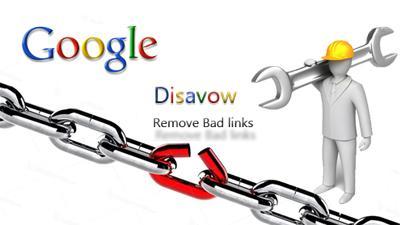After Google introduced its Penguin and Panda updates, many webmasters and SEOs found themselves scrambling to remove any potentially bad links to their websites. Google made it clear that websites with an abundance of unnatural links were likely to penalized, and their SERPs would suffer. Whether those links were the result of deliberate black hat strategies, or were wholly accidental, made no difference to Google. If your site was inundated with unnatural links, you would pay the price in search engine results. But it’s not always easy to remove the bad links from a website, and webmasters found themselves faced with penalties that were beyond their control. Google Disavow has changed all that, and has made it easier for webmasters and SEOs to neutralize bad links and preserve their SERPs.

Google Disavow 101
Google’s latest updates have been designed to improve the everyday internet user’s online experience. To do this, the search engine giant has discouraged the use of paid links, spammy links, and link exchanges. Google sees these as low quality links at best, and as attempts to manipulate SERP results at worst. Sites with an abundance of these bad links will be penalized, and will have their page rankings downgraded. So it is important for webmasters to remove low quality links form their sites. But what do you do when those offending links cannot be successfully removed? That when you turn to Google Disavow.
When webmasters identify low quality links on their sites that they cannot remove, they can request that Google ignore them when assessing their websites. The Google Disavow tool essentially allows webmasters and SEOs to single out unnatural links, and to neutralize their possible impact on a given website. This help to eliminate any possible penalties, and will allow the website to continue in its natural online momentum. It is important to remember, however, that Google is not bound to disavow any and all links that are submitted. A Google Disavow request is just that – a request. And it will be honored at Google’s discretion.
The Right Time to Use Google Disavow
Most quality websites will never have to use Google Disavow, more info at Google. If you haven’t received any penalty notices, and if your site hasn’t slipped in the SERPs, chances are you’re in good shape where Google is concerned. Still, it is never a bad idea to remove unwanted links from a website. Quality is the key, and letting a poor link linger can come back to haunt you. If your site has been penalized, or you simply want to remove any questionable links, you can do so with the “Links to Your Site” feature in Webmaster Tools. This will help you identify any unnatural links, so that they can be removed manually. Contact the webmaster of the site that has linked to you, and request that they remove or disable the troublesome link. If they refuse to remove the link, or if the webmaster can not be contacted, Google Disavow is the next step.
Using Google Disavow
Submitting a disavow request to Google is extremely easy. All you need to do is to open Webmaster Tools and go to the Google Disavow tool. Submissions to Google should be made in a plain text file, with a single URL per line. See the example below:
#Contacted owner of xxxxdomain1.com on 09/06/2013 to request link removal but got no response
domain:xxxxdomain1com - or
http://www.xxxxdomain2.com/contentA.html
The first line, containing the hash tag, is your comment
The second line beginning with the “domain” indicates that you wish to disavow all links originating from a specific domain
The final line, containing the URL, specifies the link that you wish to disavow
If you choose to use the Google Disavow tool, it is important to remember to be patient. Google will have to re-crawl and re-index all of the URLs that have been submitted, and that is likely to take some time. Chances are your site’s page ranking will not be immediately affected. The best course of action is to submit your Google Disavow request, and then return to what you do best – providing quality content for the online user.
Leslie owns and runs Cube Online Marketing and lives and breathes SEO.You May Also Be Interested In...
- Never Worry About An Update Again: How To Future Proof Your SEO
- 4 Awesome SEO Tactics To Tame The Panda
- 5 Facts Webmasters Do Not Know About Google Pagerank
 06
06 0
0 0
0 0
0 0
0
